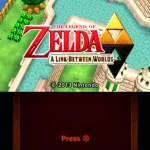DVD-RAM and DVD-ROM are two types of digital optical discs that have a variety of different properties.
DVD-RAM is a rewritable media, meaning it can be erased and rewritten as many times as you wish, while DVD-ROM can only be read from and not written to. The main use for DVD RAM is data backup, though it’s also used in some laptops and other devices alongside regular DVDs. Knowing the difference between these two optical discs will make sure you get what you want!
| DVD-RAM | DVD-ROM | |
|---|---|---|
| Definition | Digital Versatile Disc – Random Access Memory | Digital Versatile Disc – Read-Only Memory |
| Usage | Read and write data | Read-only access |
| Storage Capacity | Typically ranges from 2.6GB to 9.4GB | Ranges from 4.7GB to 17.1GB |
| Physical Format | Optical disc | Optical disc |
| Rewrite Cycles | Multiple (100,000+ cycles) | Not rewritable |
| Data Transfer Speed | Variable speeds (up to 5x) | Variable speeds (up to 16x or higher) |
| Compatibility | Requires DVD-RAM compatible drives | Compatible with standard DVD drives |
| File System Support | Supports multiple file systems (FAT32, UDF) | Supports various file systems (ISO9660, UDF) |
| Data Integrity | Built-in error correction and defect management | No error correction or defect management |
| Applications | Data backup, file storage, and data archiving | Software distribution, video games, and movies |
| Cost | Generally more expensive | Relatively cheaper |
| Lifespan | Limited lifespan (subject to scratches and deterioration) | Longer lifespan |
| Obsolescence | Facing a decline in usage due to newer technologies (e.g., cloud storage) | Limited usage due to read-only nature |
DVD-RAM is a rewritable media. It allows you to erase and write data on it while DVD ROM can only be read from. Data backup, which requires erasing and writing data onto the disk over and over again, is the main use of DVD RAM. This makes it especially useful for businesses that must store large quantities of data that need to be accessed frequently.
Additionally, some laptops contain both DVD ROM drives for reading DVDs and also have a DVD RAM drive that can allow DVDs to be written on as well as read from. USB sticks are generally preferable for small amounts of data since they are smaller in size, but may not always give you enough memory depending on your needs. Optical discs such as these tend to last much longer than USB sticks or other flash memory, making them a better option for long-term storage.
For reading, DVD ROM is good enough because all you need to do is read the data off of it once and then keep that copy in your computer’s memory. However, if you need to update or add more data frequently, then this becomes very inconvenient. That’s where DVD RAM comes in! DVD ROM drives are built into many devices such as laptops while DVD RAM drives are generally used with standalone devices like office computers.
When it comes down to it, whether or not you should get a DVD-ROM drive will depend on how often you plan on updating any digital files stored there. If you will be adding an occasional document, photo, or video and don’t need to update them frequently, then a DVD-ROM drive should be fine. However, if you plan on storing many different types of files and updating them all the time, then DVD RAM is definitely the way to go.
- DVD-ROM: Can only be read from and not written to.
- DVD-RAM: Rewritable media that can be erased and rewritten as many times as you wish. Mainly used for data backup due to its rewritability. Can also be found in some laptops alongside regular DVDs.


